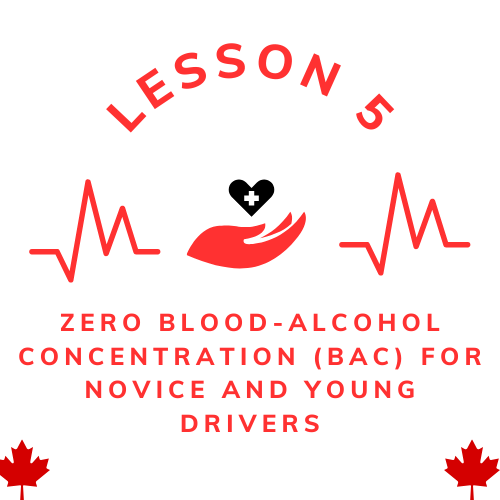In Canada, one such measure pointed toward upgrading security on the streets includes setting a zero blood-liquor fixation (BAC) limit for beginner and youthful drivers. This proactive methodology recognizes the weaknesses of less experienced drivers and the potential dangers related to any degree of liquor utilization. This article delves into the significance of the zero-BAC policy, looking at how it affects road safety, how hard it is to enforce, and how it can influence young and novice drivers to drive responsibly.
Background:
Canada’s way to deal with street wellbeing has advanced throughout the long term, integrating proof-based arrangements to lessen mishaps and improve public security. Perceiving that liquor hinders driving capacity the execution of a zero-BAC strategy for fledgling and youthful drivers addresses a designated work to relieve the dangers related to liquor utilization among this segment.
Zero BAC for Fledgling Drivers:
In Canada, beginner drivers, frequently described as those with a G1 or G2 permit, and youthful drivers younger than 21 are dependent upon a zero BAC prerequisite. This implies that they are disallowed from polishing off any measure of liquor prior to getting in the driver’s seat. The reasoning behind this severe breaking point is grounded in the figuring out that amateur drivers, with restricted insight out and about, might be more defenseless to the hindering impacts of liquor, improving the probability of mishaps.
Meaning of Zero BAC:
- Diminishing Mishap Risk: Fledgling drivers, by virtue of their restricted insight, are at a higher risk of being engaged in mishaps. As a preventative measure, implementing a zero-BAC policy aims to minimize the effects of alcohol on their ability to drive and reduce the likelihood of accidents.
- ** Promoting Responsible Conduct:** Setting a zero BAC standard sends an unmistakable message to fledgling and youthful drivers about the significance of capable and sober driving. This safeguards the actual people as well as adds to cultivating a culture of security on the streets.
- Instructive Value: The zero-BAC strategy fills in as an instructive device, assisting beginner drivers with grasping the huge outcomes of impeded driving. It promotes a mindset that places safety ahead of convenience and instills a sense of responsibility by stressing the necessity of complete alcohol abstinence.
Problems with enforcement:
While the zero BAC strategy is an excellent drive, its compelling implementation represents specific difficulties:
- Solid Testing: Implementing a zero BAC strategy requires dependable and exact testing techniques. Breathalyzer tests are frequently used but their precision can be affected by a variety of factors which could lead to errors.
- Lawful Implications: Deciding the lawful ramifications of surpassing the zero BAC limit presents difficulties. Finding some kind of harmony between corrective measures and restoration endeavors is urgent to guarantee that youthful drivers are taught as opposed to exclusively punished.
- Public Awareness: The outcome of the zero-BAC strategy depends on open mindfulness. Guaranteeing that fledgling and youthful drivers, as well as the overall population, are all informed about the approach’s presence, suggestions, and significance of consistency is crucial for its viability.
Additional Implications:
- Changing Social Norms: The zero-BAC strategy contributes to reshaping cultural standards encompassing liquor utilization and driving. Over the long haul, it can possibly impact more extensive perspectives, with the assumption that capable driving incorporates swearing off liquor completely.
- Impact on Prevention: The zero-BAC policy works as a preventative measure because it targets young and inexperienced drivers. It tends to be the weakness of this segment and tries to limit the quantity of hindered driving episodes before they happen.
- Incorporation with Graduated Permitting Systems: The zero-BAC policy is frequently incorporated into graduated licensing systems, in which novice drivers progress through distinct stages with distinct restrictions for each. This approach gives an organized system for creating driving abilities while limiting dangers related to freshness and liquor utilization.

Conclusion:
Canada’s reception of a zero BAC strategy for beginner and youthful drivers mirrors a promise to focusing on street wellbeing and diminishing the rate of weakened driving. This proactive measure recognizes the remarkable difficulties looked by less experienced drivers and perceives the potential dangers related with any degree of liquor utilization. While implementation challenges exist, the more extensive ramifications of this strategy stretch out past lawful results. It fills in as an instructive apparatus, changing accepted practices and encouraging capable driving way of behaving. As Canada keeps on refining its way to deal with street wellbeing, the zero BAC strategy remains as a vital stage towards making more secure streets for all.
